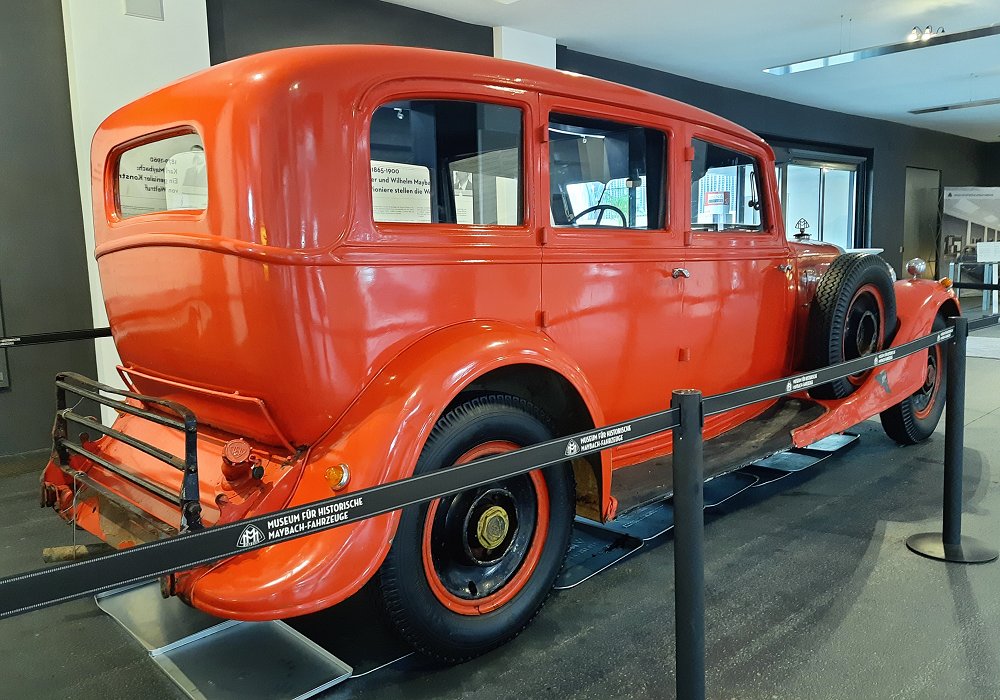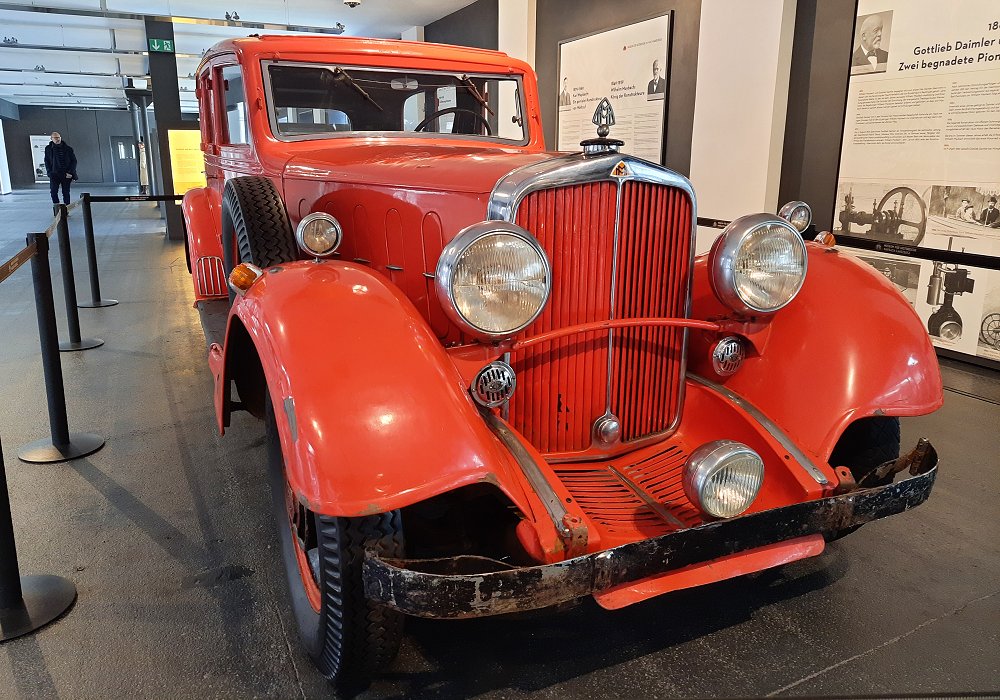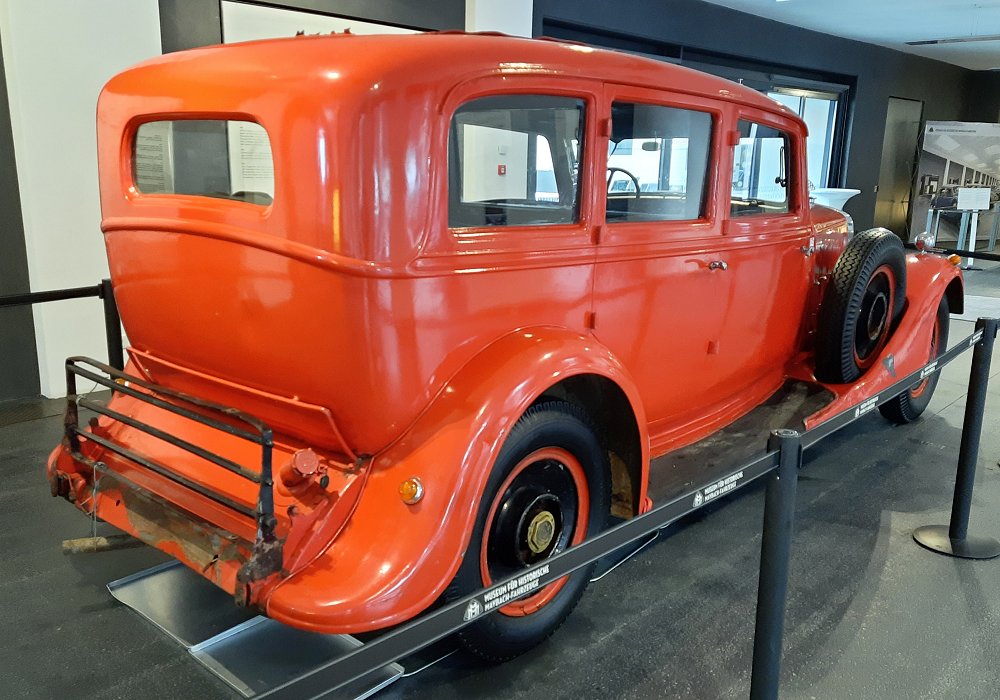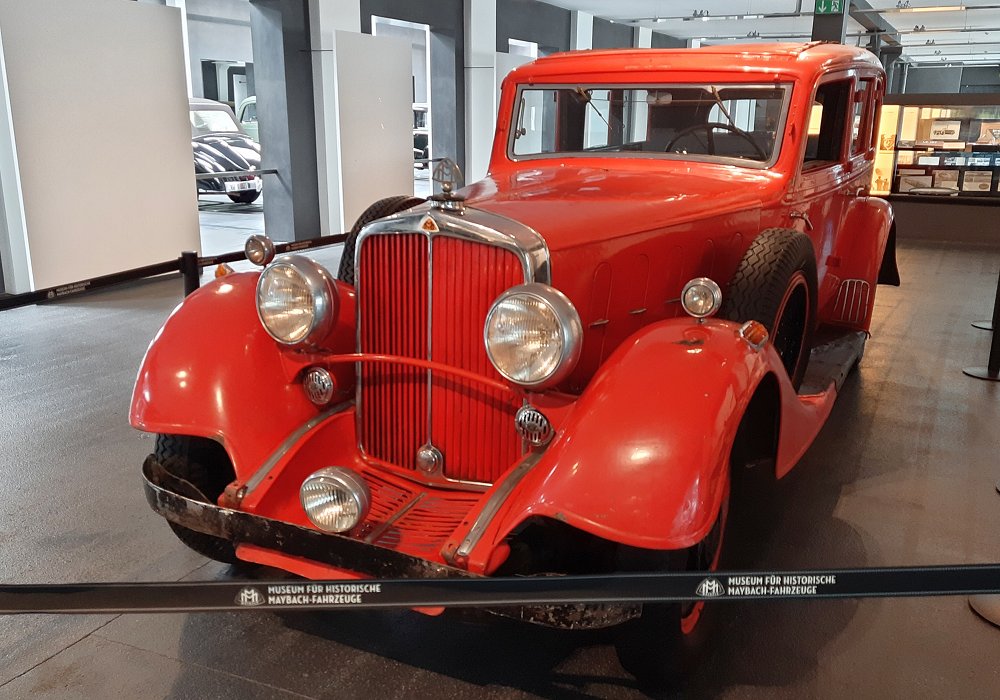Description
The Maybach DSH Pullman-Limousine by Spohn was one of the most impressive and technically advanced luxury automobiles of the early 1930s, representing a crucial step in Maybach’s transition from the enormous W-series giants of the 1920s to the more modern, refined designs that would follow. Built on the DSH chassis and bodied by Spohn — Maybach’s closest and most prestigious coachbuilder — the Pullman-Limousine embodied a combination of engineering ambition, mechanical refinement and bespoke craftsmanship that placed it among the most exclusive German cars of its era.
The DSH was introduced in 1930 as a sophisticated development of Maybach’s earlier six-cylinder models. Its engine was a 5.0-litre straight-six, naturally aspirated and designed with Maybach’s trademark precision. Although smaller than the monumental 7-litre units that powered the W 5 and W 6, the DSH engine delivered excellent refinement, smoothness and strong torque, characteristics that made it ideal for a large formal limousine. Output was roughly 100–120 horsepower depending on specification, placing it among the more powerful luxury engines of the early 1930s. Its quiet operation and flexible power band were essential qualities for a car intended primarily for chauffeur-driven use.
One of the DSH’s most notable technical features was its transmission. Maybach’s early semi-automatic shifting concept, a precursor to the brand’s later Wandler system, made the DSH easier to drive than many heavy luxury cars of its time. Though not yet equipped with the full torque-converter arrangement seen on later SW models, the DSH’s gearbox was unusually refined and reduced the mechanical effort required from the driver. Combined with Maybach’s meticulous engineering and excellent engine balancing, the car offered surprisingly smooth and restful performance, even during low-speed city driving.
The chassis was engineered for strength and comfort. A heavy-duty ladder frame carried the weight of the large Pullman body without flex, while long semi-elliptic leaf springs front and rear were carefully tuned to provide a compliant ride. Steering was deliberate yet precise, designed for steady chauffeur control rather than sporting agility. The DSH drove with a sense of calm authority, its long wheelbase giving it excellent straight-line stability and a dignified road presence.
Spohn’s Pullman-Limousine bodywork elevated the DSH into the highest ranks of European luxury. Crafted entirely by hand in Spohn’s Ravensburg workshops, the body featured exceptional panel work, flowing fenders and balanced proportions that emphasised formality and grandeur. The Pullman configuration ensured a long, upright roofline, an extended rear cabin and wide rear doors that made entry dignified and effortless. The exterior design was elegant but restrained, with tasteful chromework and a stance that conveyed importance without unnecessary ornamentation.
The interior was the highlight of the Pullman-Limousine. Designed as a rolling executive suite, the rear compartment featured deep, comfortable armchairs or a full-width bench trimmed in the finest leather or tailored wool. Polished hardwood veneers, nickel-plated fittings, thick carpeting and handcrafted cabinetry showcased the exceptional craftsmanship expected of a top-tier Maybach. Amenities often included fold-out writing tables, vanity mirrors, smoking sets, intercom systems, interior lighting arrangements and bespoke storage solutions. A division window separated the chauffeur from the passengers, ensuring privacy and quiet travel.
On the road, the DSH Pullman-Limousine offered the serene and confident performance that wealthy clients demanded. The straight-six delivered smooth, ample power, while the long-wheelbase chassis provided excellent ride comfort even on rough surfaces. Braking performance — delivered by large mechanical drums — was strong for the period, and the overall driving experience emphasised quietness, smoothness and refined control. Though not as fast or mechanically advanced as the later DS “Zeppelin” or SW series, the DSH was considered one of the most sophisticated chauffeur-driven cars available at the start of the 1930s.
Production numbers were extremely low. Each DSH Pullman-Limousine Spohn was a bespoke commission, built to order for dignitaries, industrial magnates or elite private clients. As a result, surviving examples are exceedingly rare today, valued for their historical significance and craftsmanship.
The Maybach DSH Pullman-Limousine Spohn stands as a masterpiece of early-1930s German luxury design. It represents the period when Maybach was refining its identity: merging technical innovation, dignified styling and bespoke coachbuilding into some of the finest automobiles of the pre-war era. Majestic, elegant and meticulously engineered, it remains one of the most impressive formal cars ever to carry the Maybach name.







